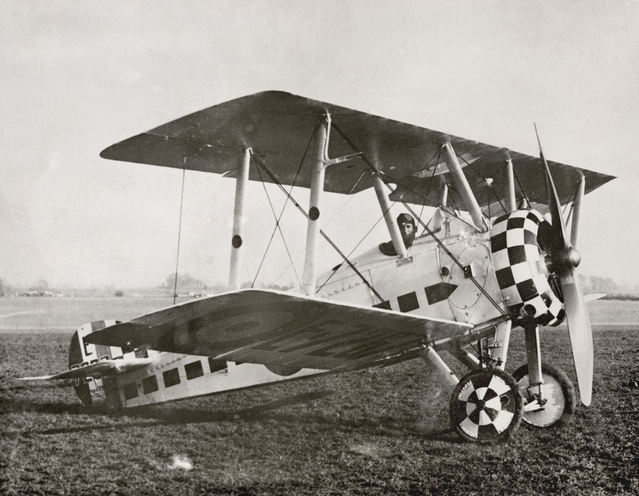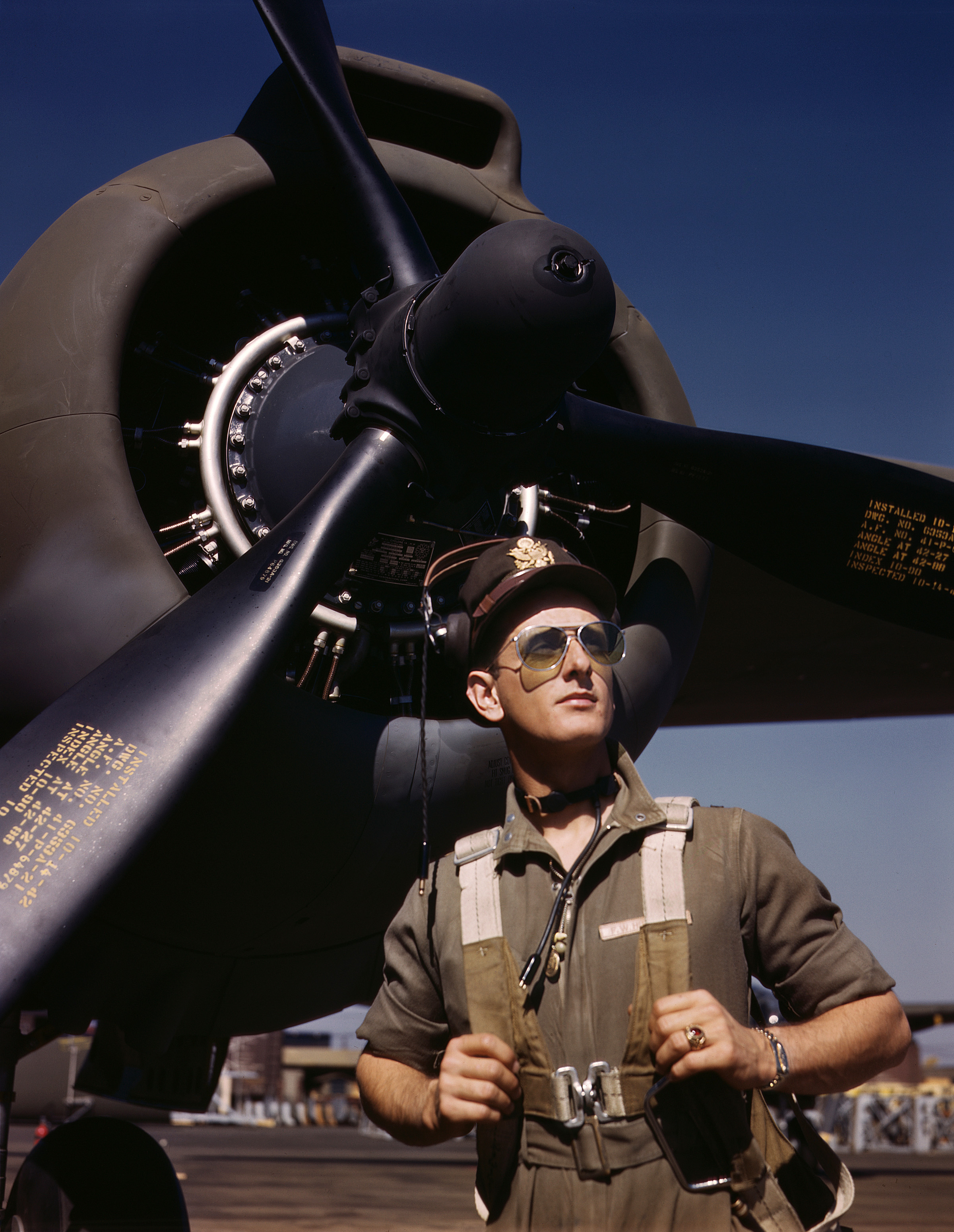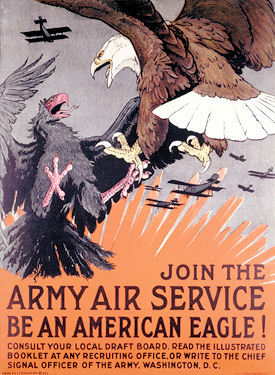|
Kenneth Russell Unger
Lieutenant (later rear admiral) Kenneth Russell Unger was an American World War I flying ace credited with fourteen aerial victories. His candidacy rejected by his own nation, Unger applied to the British Royal Flying Corps for military pilot training in June 1917. Once trained, he was assigned to the Royal Naval Air Service (RNAS). As the RNAS was merged into the Royal Air Force, Unger scored his aerial victories between 26 June and 1 November 1918. In later life, Unger remained involved in aviation and served again during World War II. He also joined the U.S. Navy Reserves, rising to the rank of rear admiral. Early training Unger took private instruction with the Aero Club of America, earning Certificate No. 1356. Nevertheless, the United States Air Service rejected him for enlistment, so he went to Canada to join the Royal Flying Corps in June 1917. Ironically, his RFC training took him back to Texas. He then transited England on his way to service with No. 10 Squadron RNAS, i ... [...More Info...] [...Related Items...] OR: [Wikipedia] [Google] [Baidu] |
Newark, New Jersey
Newark ( , ) is the List of municipalities in New Jersey, most populous City (New Jersey), city in the U.S. state of New Jersey, the county seat of Essex County, New Jersey, Essex County, and a principal city of the New York metropolitan area.Table1. New Jersey Counties and Most Populous Cities and Townships: 2020 and 2010 Censuses , New Jersey Department of Labor and Workforce Development. Accessed December 1, 2022.New Jersey County Map , New Jersey Department of State. Accessed December 27, 2022. As of the 2020 U ... [...More Info...] [...Related Items...] OR: [Wikipedia] [Google] [Baidu] |
Sopwith Camel
The Sopwith Camel is a British First World War single-seat biplane fighter aircraft that was introduced on the Western Front in 1917. It was developed by the Sopwith Aviation Company as a successor to the Sopwith Pup and became one of the best-known fighter aircraft of the Great War. Pilots flying Camels were credited with downing 1,294 enemy aircraft, more than any other Allied fighter of the conflict. Towards the end of the war, Camels lost their edge as fighters and were also used as a ground-attack aircraft. The Camel was powered by a single rotary engine and was armed with twin synchronized Vickers machine guns. It was difficult to fly, with 90% of its weight in the front two metres (seven feet) of the aircraft, but it was highly manoeuvrable in the hands of an experienced pilot, a vital attribute in the relatively low-speed, low-altitude dogfights of the era. Its pilots joked that their fates would involve "a wooden cross, the Red Cross, or a Victoria Cross". T ... [...More Info...] [...Related Items...] OR: [Wikipedia] [Google] [Baidu] |
Aviators From New Jersey
An aircraft pilot or aviator is a person who controls the flight of an aircraft by operating its Aircraft flight control system, directional flight controls. Some other aircrew, aircrew members, such as navigators or flight engineers, are also considered aviators because they are involved in operating the aircraft's navigation and engine systems. Other aircrew members, such as drone operators, flight attendants, Aircraft maintenance technician, mechanics and Line technician (aviation), ground crew, are not classified as aviators. In recognition of the pilots' qualifications and responsibilities, most militaries and many airlines worldwide award aviator badges to their pilots. Definition The first recorded use of the term ''aviator'' (''aviateur'' in French) was in 1887, as a variation of ''aviation'', from the Latin ''avis'' (meaning ''bird''), coined in 1863 by in ''Aviation Ou Navigation Aérienne'' ("Aviation or Air Navigation"). The term ''aviatrix'' (''aviatrice'' in ... [...More Info...] [...Related Items...] OR: [Wikipedia] [Google] [Baidu] |
American World War I Flying Aces
American(s) may refer to: * American, something of, from, or related to the United States of America, commonly known as the "United States" or "America" ** Americans, citizens and nationals of the United States of America ** American ancestry, people who self-identify their ancestry as "American" ** American English, the set of varieties of the English language native to the United States ** Native Americans in the United States, indigenous peoples of the United States * American, something of, from, or related to the Americas, also known as "America" ** Indigenous peoples of the Americas * American (word), for analysis and history of the meanings in various contexts Organizations * American Airlines, U.S.-based airline headquartered in Fort Worth, Texas * American Athletic Conference, an American college athletic conference * American Recordings (record label), a record label that was previously known as Def American * American University, in Washington, D.C. Sports teams S ... [...More Info...] [...Related Items...] OR: [Wikipedia] [Google] [Baidu] |
List Of World War I Flying Aces From The United States
The following is a list of flying aces from the United States of America who served in World War I. Overview Even before the United States entry into World War I in April 1917, many Americans volunteered to serve in the armed forces of Great Britain and France. Many eventually found their ways into the Royal Flying Corps and ''Aéronautique Militaire'' (French Air Service). The British integrated the Americans into their existing squadrons, while the French set up separate American squadrons such as the Lafayette Escadrille and then the Lafayette Flying Corps, as well as integrated the pilots into existing squadrons. When American Air Service units began reaching England and France in the fall of 1917, many of the Americans serving in British and French squadrons transferred to the American units, but not all. This list is separated such that American pilots who served in the Royal Flying Corps (later Royal Air Force) squadrons and ''Aéronautique Militaire'' are listed as such ... [...More Info...] [...Related Items...] OR: [Wikipedia] [Google] [Baidu] |
Hadley Airport
Hadley Airport is a public use airport owned by the U.S. Bureau of Land Management and located four nautical miles (7 km) southwest of the central business district of Round Mountain, a town in Nye County, Nevada, United States. History In the 1930s, American World War I flying ace Kenneth R. Unger ran a flying school and air shows from the airport. Facilities and aircraft Hadley Airport covers an area of . It contains one runway designated 17/35 which has an asphalt surface measuring 6,776 x 60 feet (2,065 x 18 m). For the 12-month period ending June 30, 2005, the airport had 2,000 general aviation aircraft operations, an average of 166 per month. See also * List of airports in Nevada References External links * from Nevada DOT Aerial image as of October 1999from USGS ''The National Map ''The National Map'' is a Collaboration, collaborative effort of the United States Geological Survey (USGS) and other federal, state, and local agencies to improve and d ... [...More Info...] [...Related Items...] OR: [Wikipedia] [Google] [Baidu] |
West Coast Of The United States
The West Coast of the United States, also known as the Pacific Coast and the Western Seaboard, is the coastline along which the Western United States meets the North Pacific Ocean. The term typically refers to the Contiguous United States, contiguous U.S. states of California, Oregon, and Washington (state), Washington, but it occasionally includes Alaska and Hawaii in bureaucratic usage. For example, the United States Census Bureau, U.S. Census Bureau considers both states to be part of a larger U.S. geographic division. Definition There are conflicting definitions of which states comprise the West Coast of the United States, but the West Coast always includes California, Oregon, and Washington (state), Washington as part of that definition. Under most circumstances, however, the term encompasses the three contiguous states and Alaska, as they are all located in North America. For census purposes, Hawaii is part of the West Coast, along with the other four states. ''Encyclopædia ... [...More Info...] [...Related Items...] OR: [Wikipedia] [Google] [Baidu] |
Airmails Of The United States
United States airmail was a service class of the United States Post Office Department (USPOD) and its successor United States Postal Service (USPS) delivering air mail by aircraft flown within the United States and its possessions and territories. Letters and parcels intended for air mail service were marked as "Via Air Mail" (or equivalent), appropriately Franking, franked, and assigned to any then existing class or sub-class of the Air Mail service. After an intermittent series of government sponsored experimental flights between 1911 and 1918, domestic U.S. Air Mail was formally established as a new class of service by the Post Office Department on May 15, 1918, with the inauguration of the Washington–Philadelphia–New York route for which the first of special List of United States airmail stamps#1918–1919, Air Mail stamps were issued. The exclusive transportation of flown mail by government-operated aircraft came to an end in 1926 under the provisions of the Air Mail ... [...More Info...] [...Related Items...] OR: [Wikipedia] [Google] [Baidu] |
Balloon Buster
Balloon busters were military pilots known for destroying enemy observation balloons. These pilots were noted for their fearlessness, as balloons were stationary targets able to receive heavy defenses, from the ground and the air. Seventy-seven flying aces in World War I were each credited with destroying five or more balloons, and thus were balloon aces. The crucial role of observation balloons An observation balloon was both a vulnerable and a valuable target: the balloon was moored in a stationary position and was lifted by flammable hydrogen gas, whose use was necessitated by the scarcity of helium reserves among European powers. The artillery observer, suspended in the wicker basket beneath, typically had a wireless transmitter, binoculars and/or a long-range camera. His job was to observe actions on the front-line and behind it, to spot enemy troop movements or unusual activity of any sort, and to call down artillery fire onto any worthwhile targets. Balloon observers we ... [...More Info...] [...Related Items...] OR: [Wikipedia] [Google] [Baidu] |
Pfalz D
Pfalz, Pfälzer, or Pfälzisch are German words referring to Palatinate. They may refer to: Places *Pfalz, the Palatinate (region) of Germany **Nordpfalz, the North Palatinate **Vorderpfalz, the Anterior Palatinate **Südpfalz, the South Palatinate **Westpfalz, the West Palatinate *Pfalz, the Palatinate wine region of Germany **Pfälzische Weinkönigin, the Palatine Wine Queen elected representative of the region *the ''Pfalz'', nickname for Pfalzgrafenstein Castle, Germany *Pfälzerwald, the Palatinate Forest *Rheinland-Pfalz, the current federal German state of Rhineland-Palatinate * Königspfalz or Kaiserpfalz, palaces and castles across the Holy Roman Empire that served as temporary seats of power for the king or emperor in the Early and High Middle Ages. Historic states *''Kurpfalz'', the Electoral Palatinate of the Holy Roman Empire. Historic houses and states include: **Pfalz-Birkenfeld, the House of Palatinate-Birkenfeld ** Pfalz-Birkenfeld-Bischweiler ** Pfa ... [...More Info...] [...Related Items...] OR: [Wikipedia] [Google] [Baidu] |
Fokker D
Fokker (; ) was a Dutch aircraft manufacturer that operated from 1912 to 1996. The company was founded by the Dutch aviator Anthony Fokker and became famous during World War I for its fighter aircraft. During its most successful period in the 1920s and 1930s, Fokker dominated the civil aviation market. The company's fortunes declined over the course of the late 20th century; it declared bankruptcy in 1996, and its operations were sold to competitors. History Fokker in Germany At age 20, while studying in Germany, Anthony Fokker built his initial aircraft, the ''Spin'' (Spider)—the first Dutch-built plane to fly in his home country. Taking advantage of better opportunities in Germany, he moved to Berlin, where in 1912, he founded his first company, Fokker Aeroplanbau, later moving to the Görries suburb just southwest of Schwerin (at ), where the current company was founded, as Fokker Aviatik GmbH, on 12 February 1912. World War I Fokker capitalized on having sold several ... [...More Info...] [...Related Items...] OR: [Wikipedia] [Google] [Baidu] |
Lawrence Coombes (aviator)
Lawrence Percival Coombes (9 April 1899 – 3 June 1988) was a British-Australian aeronautical engineer who served as the first Chief Superintendent of the Australian Aeronautical Research Laboratories from 1938 until 1964. He had previously worked at the Royal Aircraft Establishment from 1924, and during World War I had served as a pilot in the Royal Naval Air Service and Royal Air Force, becoming a flying ace credited with 15 aerial victories. Early life and education Coombes was born in Madras, India, and educated in London. From 1915 he studied engineering at the City and Guilds College in London, but in July 1917 he took leave of absence from his studies in order to enlist in the Royal Naval Air Service. Military career Coombes was assigned to on 22 July 1917 as a probationary flight officer, and attended the training schools at Air Stations Chingford and Cranwell, before being awarded his Royal Aero Club Aviator's Certificate at Air Station Fairlop on 20 September. He w ... [...More Info...] [...Related Items...] OR: [Wikipedia] [Google] [Baidu] |






